Venus, Starlink Trains, Clouds,
Moon on Dome, Moon
Posted: 2 August 2023
With a likely somewhat clear night, late afternoon on Tuesday, 1 August 2023, I removed the Dome Cover.
|
Open: Tuesday, 1 August 2023, 1805 MST Temperature: 88°F |
Session: 1910 Conditions: Mostly clear |
Equipment:
12" f/8 LX600 w/StarLock
2" 24mm UWA eyepiece
2" 2X Powermate
Atmospheric Dispersion Corrector
12x50 binoculars
2" 30mm eyepiece
Camera:
D850 DSLR
iPhone 13 Pro Max
SYNCed the observatory clock.
1812 MST: LX600 ON, StarLock OFF, High Precision OFF.
Viewed Venus, 102X and 203X. Very thin crescent phase.
Mounted the D850 DSLR at prime focus + 2X Powermate + Atmospheric Dispersion Corrector. Took this full frame image of Venus (1/800sec, ISO 400).
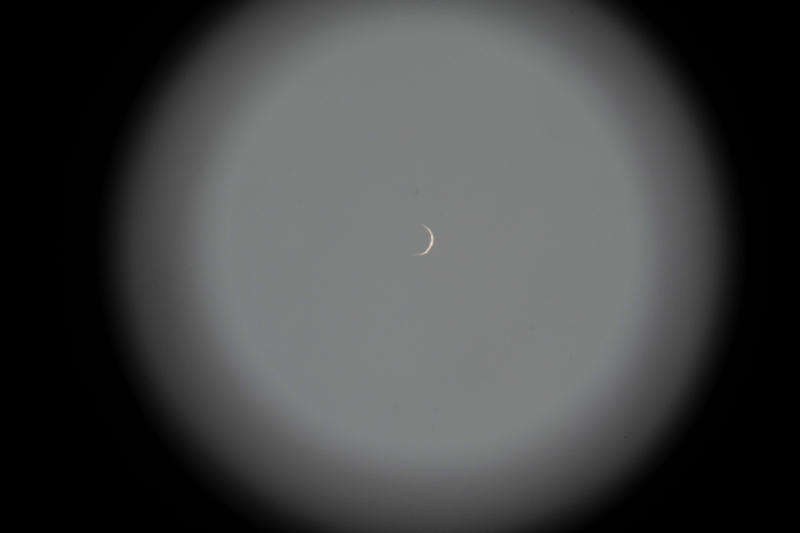
Then did a 30 seconds video recording (1080p, 60fps, 1/800sec, ISO 400). This is a stack of 1824 video frames.
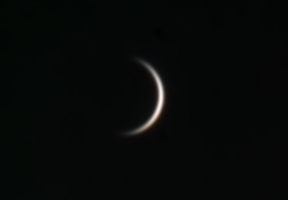
1856 MST: Relaxed on the observatory patio bench.
1910 MST: Viewed Venus, 12x50 binoculars. The crescent phase was clearly visible.
1925 MST: Sunset. Took a last look at Venus through some clouds and a tree, 203X.
1932 MST: Back to the bench.
1935 MST: Crepuscular rays were visible in the eastern sky. Took this photo using the iPhone 13 Pro Max.
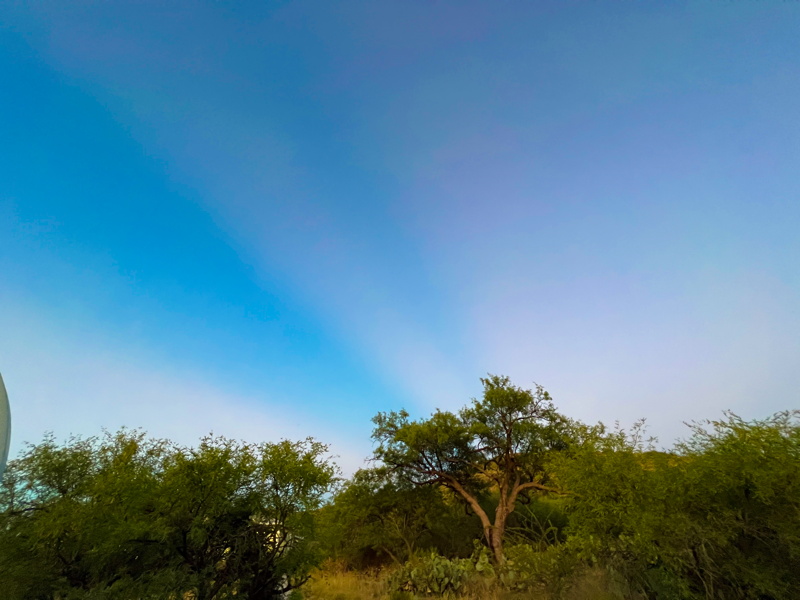
1941 MST: Back at the 12" telescope, I viewed Mercury, 102X and 203X. A slight gibbous phase was visible. Then back to the bench.
2000 MST: Viewed Mercury, 203X. Viewed viewed Mars, 203X. Small disk visible.
2004 MST: High Precision ON.
Slewed to NGC5566 (galaxy), which was not yet visible in the twilight sky. I hoped to resume imaging some Herschel 400 galaxies this session if the sky did not get too bright as the Full Moon rose.
2008 MST: Back to the bench.
2011 MST: As I was looking up at the night sky I saw a long, bright, SpaceX Starlink satellites train moving south to north from Scorpius to Cygnus. I got a quick photo of some of the satellites passing through the Summer Triangle using the iPhone Camera app (Night Mode, 10 seconds, 1X lens, handheld).
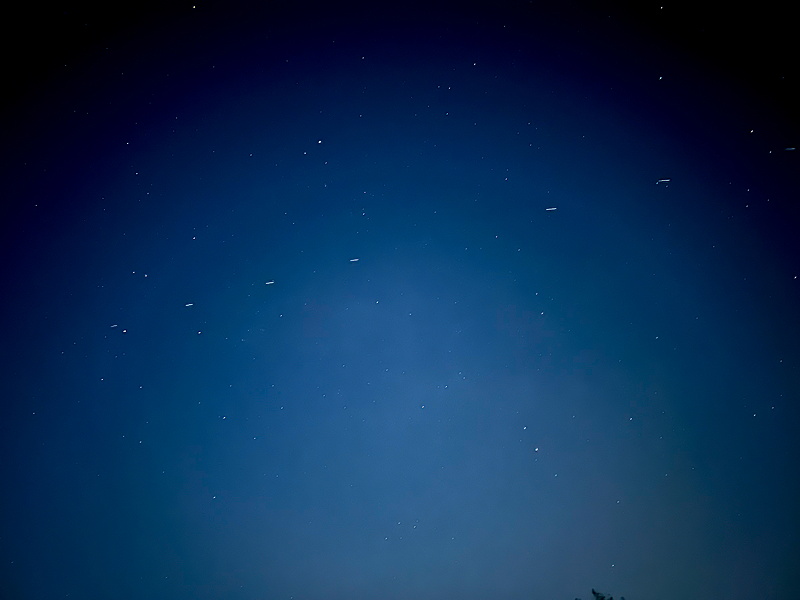
The pass lasted until 2016 MST. The brightest satellites were comparable to the star Deneb (Mag. +1.25).
2020 MST: The southeastern sky was brightening from the rising Full Moon.
2029 MST: Back at the telescope, NGC5566 (galaxy) was faintly visible, 102X. But the moonlit sky was already getting too bright to do any Deep Sky Object imaging. With a possible clear night in the forecast for Wednesday night, I decided to not image any Herschel 400 objects this session.
2038 MST: High Precision OFF.
Slewed to the Moon, still behind the hill to the southeast. Relaxed on the bench while waiting for the Moon to appear.
2043 MST: I was surprised to see a second SpaceX Starlink satellites train moving west to east above Scorpius. iPhone photo (Night Mode, 10 seconds, 1X lens, handheld).
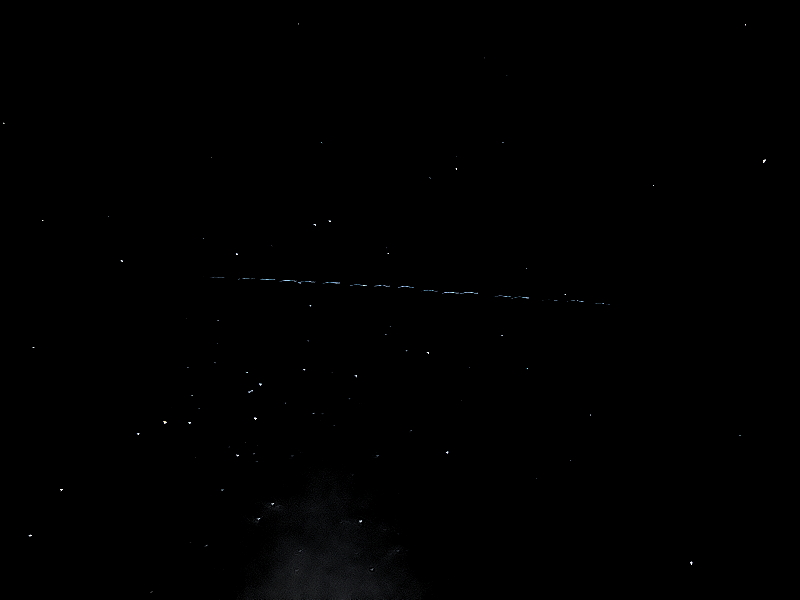
This was the first time I've seen two Starlink trains polluting my night sky on the same night.
2102 MST: The Moon was rising over the hill.
2115 MST: Clouds increasing.
2134 MST: Took this iPhone photo (Night Mode, 3 seconds, 1X lens, handheld) of the Full Moon projected onto the observatory dome.
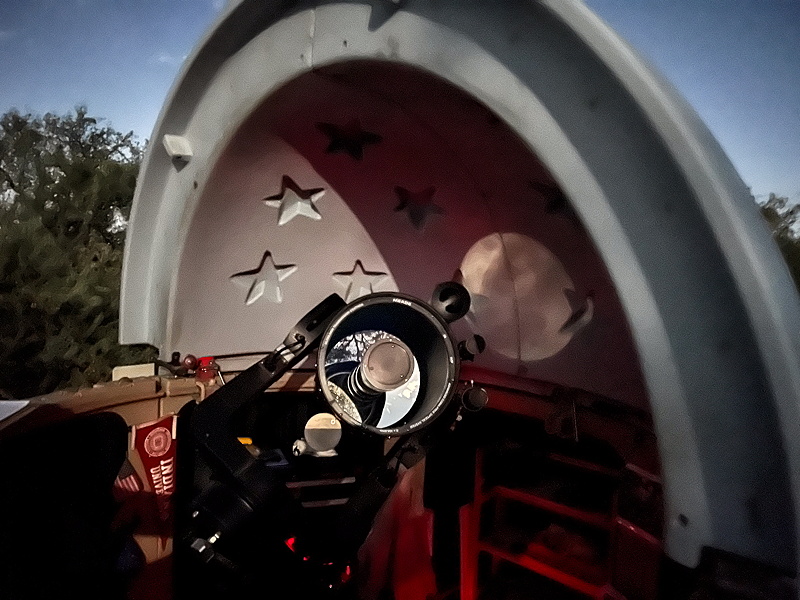
2137 MST: Viewed the Moon through some clouds, 81X. A slight terminator was visible.
I then had to wait for clouds to SLOWLY move out of the way of the Moon.
2150 MST: The clouds.
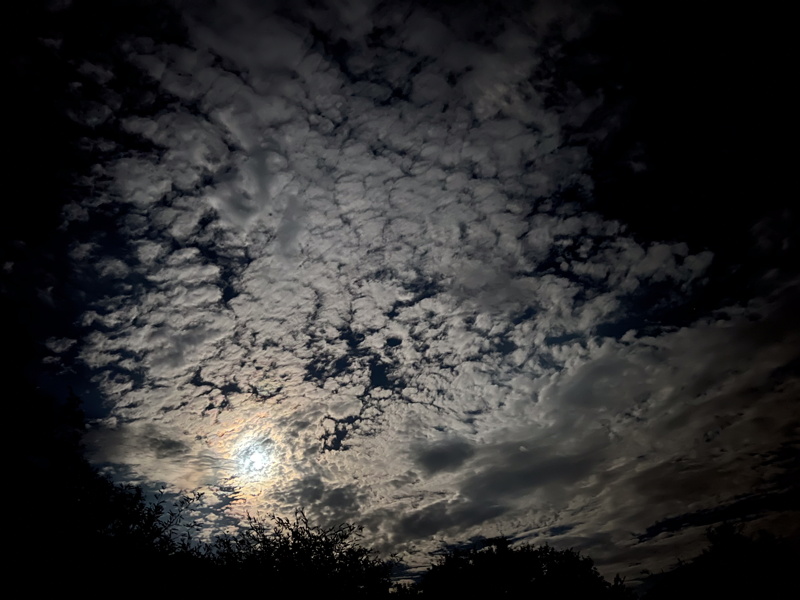
Attached the LiDAR Cover on the iPhone 13 Pro Max and mounted the iPhone on the 30mm eyepiece. I then had to wait, hoping for a small hole to arrive at the Moon to allow me to photograph the Full Moon.
2219 MST: The clouds were not cooperating. Took this iPhone afocal 81X image of the Moon through the clouds taken with NightCap Camera (ISO 40, 1/10000sec, 1X lens).
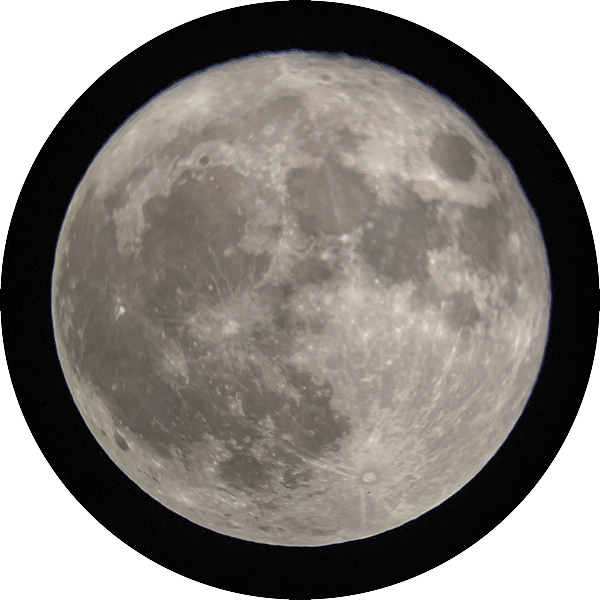
2231 MST: I gave up on any further attempts at photographing the Moon due to the slowly moving clouds that were now in most of the sky.
2234 MST: LX600 OFF.
|
Close: Tuesday, 1 August 2023, 2244 MST Temperature: 79°F |
Session Length: 4h 39m Conditions: Mostly cloudy |
Comments are welcome using Email. Please read the Email Etiquette guidance.
Cassiopeia Observatory Home Page
Copyright ©2023 Michael L. Weasner / mweasner@mac.com.
URL = http://www.weasner.com/co/Reports/2023/08/02/index.html
